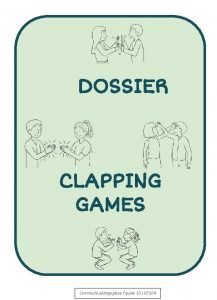Whats Wrong With Weight Charts Going for the












- Slides: 12

What’s Wrong With Weight Charts Going for the 3 Increases: Increase in Health, Increase in Happiness & Increase in Energy Strategies for Success in Weight Management By: James J. Messina, Ph. D.

Calculating Lean Body Mass l l The best weight for you is your lean body mass (everything but fat) plus just the amount of fat necessary for good health: 10 percent to 18 percent of total body weight for men 18 percent to 25 percent of total body weight for women A health professional can estimate percentage by measuring body fat with skinfold caliper

Body Mass Index Most people do not have their lean body mass measured l A more common, but less accurate, way to determine your ideal weight is to use standard weight charts based on a person's height and frame l BMI: Measures weight (in kilograms) divided by height, squared l

Body Mass Index Ranges 18 or less 19 to 24 25 to 29 30 or higher underweight (increased health risk) ideal weight overweight (increased health risk) excessively overweight (significant health risk)

Ideal Calculated Weight For Men: 106 lbs. plus six lbs. for each in height over five feet l For Women: 100 lbs. plus five lbs. for each in height over five feet l Using NIH guidelines, roughly 100 pounds greater than the ideal Calculated Weight constitutes clinically severe obesity l

How the charts got started 1942, Louis Dublin, a statistician at Metropolitan Life Insurance Company, grouped four million of Met. Life insured Put categories based on height, body frame (small, medium or large) & weight l Discovered who lived longest were ones who maintained their body weight at the level for average 25 -year-olds l

How the charts got started Metropolitan Life tables widely used for determining recommended body weights l 1942 tables gave "ideal body weights“ l 1959 revised as"desirable body weights“ l 1983 revised as "height and weight tables" l Weights given in the 1983 tables are heavier than the 1942 tables because, in general, heavier people live longer today l

Critique of Met. Life Charts 1. 2. 3. 4. 5. 6. Insured people tend to be healthier than uninsured people Frame size was never consistently measured People included were predominantly white & middle-classed Some persons were actually weighed, some were not Some wore shoes and/or clothing, some did not Tables do not consider percentage of body fat or distribution known as factors in longevity

Use of the Charts Many experts say 1942 tables are more accurate because they indicate lower "ideal weights" l Many experts support the use of the 1983 tables, citing that these are the latest statistical sampling of such matters l The American Heart Association recommends using 1959 tables rather than the newer tables that suggest somewhat higher weights l

Charts make it obvious US Army, US National Center for Health Statistics, North American Association for Study of Obesity & USDA l There is no consensus of "ideal body weight" l It is different for every individual l Depends on health, body fat content & distribution, musculature, age, activity, metabolism, & other factors not simple to measure accurately l

What we learn from looking at charts You & your physician or dietitian must decide what your ideal weight should be l You probably have an idea what that weight is l Start conservatively l If you reach your target weight & still feel you need to trim off additional weight, you always have option to set a new target goal. l

Online Weight Chart resources l l http: //www. metlife. com/Lifeadvice/Tools/Height nweight/index. html http: //www. imchubby. com/fwchartm. shtml http: //www. med. umich. edu/1 libr/primry/life 15. ht m http: //www. bcbsga. com/services/quizzes/heart/ wellsource_heart/weight. htm
 Lve
Lve You put the wrong emphasis on the wrong syllable
You put the wrong emphasis on the wrong syllable If you are going through hell, keep going means
If you are going through hell, keep going means Tolerable weight
Tolerable weight Weight-losing industry example
Weight-losing industry example Whats wrong with niamh cullen
Whats wrong with niamh cullen Whats wrong with this graph
Whats wrong with this graph What's wrong in the picture
What's wrong in the picture Whats wrong with this photo
Whats wrong with this photo Objective of revision
Objective of revision Whats wrong
Whats wrong Whats wrong with this picture
Whats wrong with this picture Whats going on in
Whats going on in























